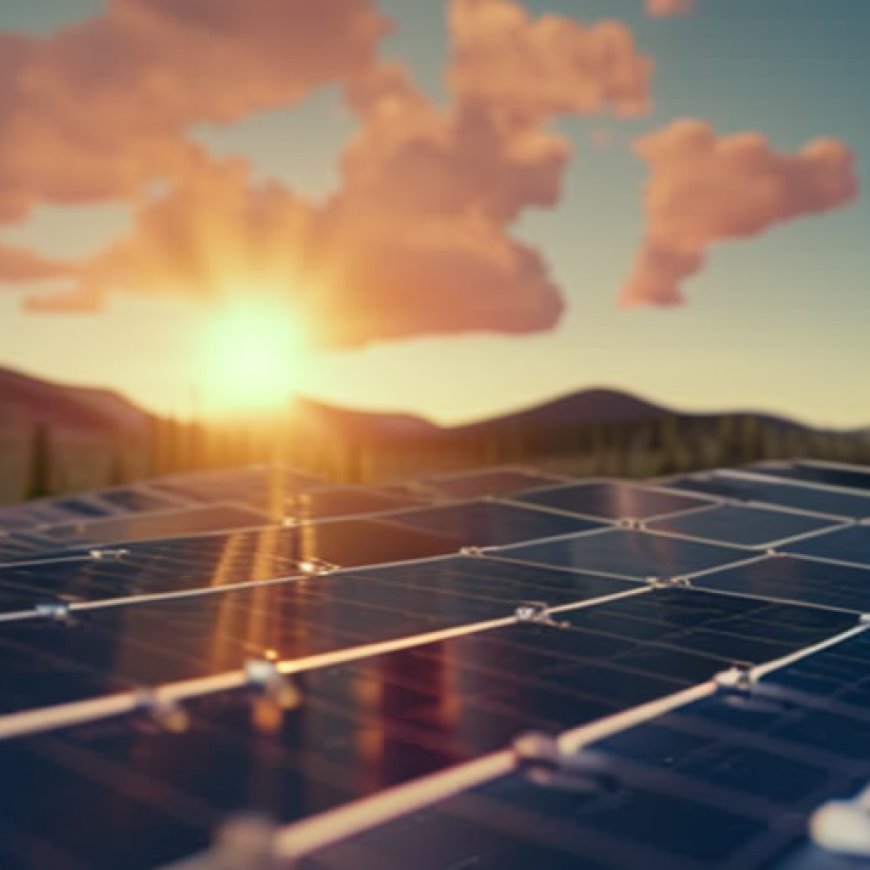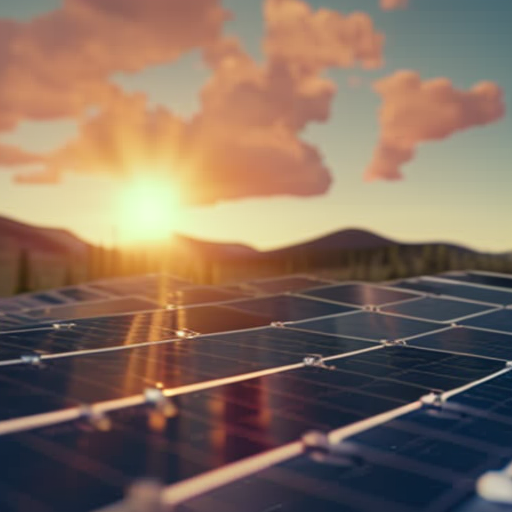Federal money, improving efficiency pushing solar energy in Montana
Solar energy growing in Montana due to cost, tax credits Great Falls Tribune


Solar Energy in Montana: A Growing Trend
As recently as a decade ago, a common public perception of solar energy was that it was inefficient, unreliable, and expensive. To actively generate electricity using photovoltaic panels on your roof or from a ground-mounted array was something that might appeal to environmentalists or homeowners in the desert southwest but made little sense on the high plains of Montana, where the pale winter sun can remain obscured by clouds for weeks at a time.
Yet a growing number of Montanans are taking another look at solar, and not just because it’s a renewable energy source that can make you feel good about reducing greenhouse gas emissions. Modern solar panels are twice as efficient and about one-quarter the price of what they were just 15 years ago.
Benefits of Solar Energy
- Sustainable and renewable energy source
- Reduces greenhouse gas emissions
- Increased efficiency and affordability
- Potential for financial savings
A moderately sized commercial building can easily be fitted with a solar energy system capable of producing 50kW of electricity, enough to power two modern homes when operating at peak capacity.
But the factor that’s really driving even tight-fisted conservatives to take a more generous view of solar is the current schedule of federal grants and tax credits that combined can lower the cost of installing a photovoltaic solar system by as much as 65%.
The Role of Federal Grants and Tax Credits
- Rural Energy for America Program (REAP) grants for up to 25% of the total cost of a solar project
- 21% federal tax credit on the remaining cost
- Inflation Reduction Act of 2022 (IRA) increased REAP grants to 50% and tax credit to 30%
“Statewide, the increase in solar installations has been huge,” said John Palm, CEO of Bozeman Green Build, a renewable energy systems company that’s been operating in Montana for more than 30 years.
He said that there is a segment of his customers who are most interested in solar’s environmental benefits: those who have a cabin in the woods they want to electrify or who value self-reliance and want to be less reliant on big utility companies. However, the biggest single motivation is always financial – seeing a net return on investment.
“There is no single political leaning of our customers one way or the other,” Palm said. “We have what I would call extreme leftists and extreme conservatives, both. Saving money makes all of them feel good.”
“I’m going to get 30% of my investment back as a tax credit that will reduce my tax burden,” said Olaf Stimac, a retired pipe fitter who recently had a large solar array attached to the roof of his shop north of Great Falls. “That was a big part of it, and I’m doing a good thing for the environment.”
Stimac has worked in heavy industrial settings throughout his career and generally supports fossil fuel industries as a valuable and necessary component of the economy.
“I’m not a radical environmentalist,” he said matter-of-factly. “I’m just an ordinary, middle-class working guy.”
“Oil and coal are going to be part of our economy for some time,” Stimac added. “Even though solar’s not the ultimate answer to everything, it is a part of it. It makes you feel good that you are doing something – and my electricity bill is less, which makes me happy.”
The Role of Chinese Investment
- Chinese investment in solar panel production has made photovoltaic cells more affordable
- Increased efficiency and decreased cost of solar panels
“Thank the Chinese,” Palm said with a hint of irony. “Without their buckling down and having decided to increase the production in the way that they did, who knows where we’d be right now in pricing. They set the pricing for the entire world market.”
Education and Outreach
- Education is key to increasing solar energy adoption
- Organizations like the Northern Plains Resource Council (NPRC) are leading the campaign to educate the public about solar power opportunities
- The Central Montana Resource Council (CMRC) has launched an educational program called “Solarize Central Montana”
“Really the only thing between more solar and the people who want it is education,” Palm added. “I think folks just don’t know how it works, they don’t understand the benefits and they just need the opportunity to dig into it a little bit.”
Current Trends and Future Outlook
- Solar energy accounts for about 3% of all utility-scale electricity production in the U.S.
- Solar energy expansion has doubled since 2016
- Residential solar power installations rose by 34% from 2.9 gigawatts in 2020 to 3.9 gigawatts in 2021
Installing a new solar energy production is still expensive, but with the federal incentives, the system can pay for itself in reduced energy costs within six to 12 years depending on the plan.
“You have a positive cash flow from these systems as soon as they reach their payback period,” Palm explained. “With the REAP grant at 50% plus the federal tax of 30%, you’re looking at a 65% reduction in cost, and the payback time on those systems is about six years. That’s an incredibly short period.”
For more information on the availability of solar energy for your home or business, contact the Central Montana Resource Council at www.northernplains.org or through the Northern Plains Resource Council at www.northernplain.org
SDGs, Targets, and Indicators
-
SDG 7: Affordable and Clean Energy
- Target 7.2: Increase substantially the share of renewable energy in the global energy mix
- Indicator 7.2.1: Renewable energy share in the total final energy consumption
-
SDG 13: Climate Action
- Target 13.2: Integrate climate change measures into national policies, strategies, and planning
- Indicator 13.2.1: Number of countries that have integrated mitigation, adaptation, impact reduction, and early warning into primary, secondary, and tertiary curricula
-
SDG 9: Industry, Innovation, and Infrastructure
- Target 9.4: Upgrade infrastructure and retrofit industries to make them sustainable
- Indicator 9.4.1: CO2 emission per unit of value added
Analysis
The article discusses the increasing interest in solar energy in Montana due to advancements in technology and the availability of federal grants and tax credits. Based on this information, the following SDGs, targets, and indicators can be identified:
1. SDG 7: Affordable and Clean Energy
The article highlights the affordability and environmental benefits of solar energy, which aligns with SDG 7’s focus on promoting affordable and clean energy sources.
- Target 7.2: Increase substantially the share of renewable energy in the global energy mix
- Indicator 7.2.1: Renewable energy share in the total final energy consumption
2. SDG 13: Climate Action
The adoption of solar energy contributes to climate action by reducing greenhouse gas emissions. The article mentions the role of solar energy in reducing reliance on fossil fuels.
- Target 13.2: Integrate climate change measures into national policies, strategies, and planning
- Indicator 13.2.1: Number of countries that have integrated mitigation, adaptation, impact reduction, and early warning into primary, secondary, and tertiary curricula
3. SDG 9: Industry, Innovation, and Infrastructure
The article discusses the technological advancements in solar panels and their impact on the affordability and efficiency of solar energy systems. This aligns with SDG 9’s focus on promoting sustainable infrastructure and innovation.
- Target 9.4: Upgrade infrastructure and retrofit industries to make them sustainable
- Indicator 9.4.1: CO2 emission per unit of value added
Table: SDGs, Targets, and Indicators
| SDGs | Targets | Indicators |
|---|---|---|
| SDG 7: Affordable and Clean Energy | Target 7.2: Increase substantially the share of renewable energy in the global energy mix | Indicator 7.2.1: Renewable energy share in the total final energy consumption |
| SDG 13: Climate Action | Target 13.2: Integrate climate change measures into national policies, strategies, and planning | Indicator 13.2.1: Number of countries that have integrated mitigation, adaptation, impact reduction, and early warning into primary, secondary, and tertiary curricula |
| SDG 9: Industry, Innovation, and Infrastructure | Target 9.4: Upgrade infrastructure and retrofit industries to make them sustainable | Indicator 9.4.1: CO2 emission per unit of value added |
Behold! This splendid article springs forth from the wellspring of knowledge, shaped by a wondrous proprietary AI technology that delved into a vast ocean of data, illuminating the path towards the Sustainable Development Goals. Remember that all rights are reserved by SDG Investors LLC, empowering us to champion progress together.
Source: greatfallstribune.com

Join us, as fellow seekers of change, on a transformative journey at https://sdgtalks.ai/welcome, where you can become a member and actively contribute to shaping a brighter future.







